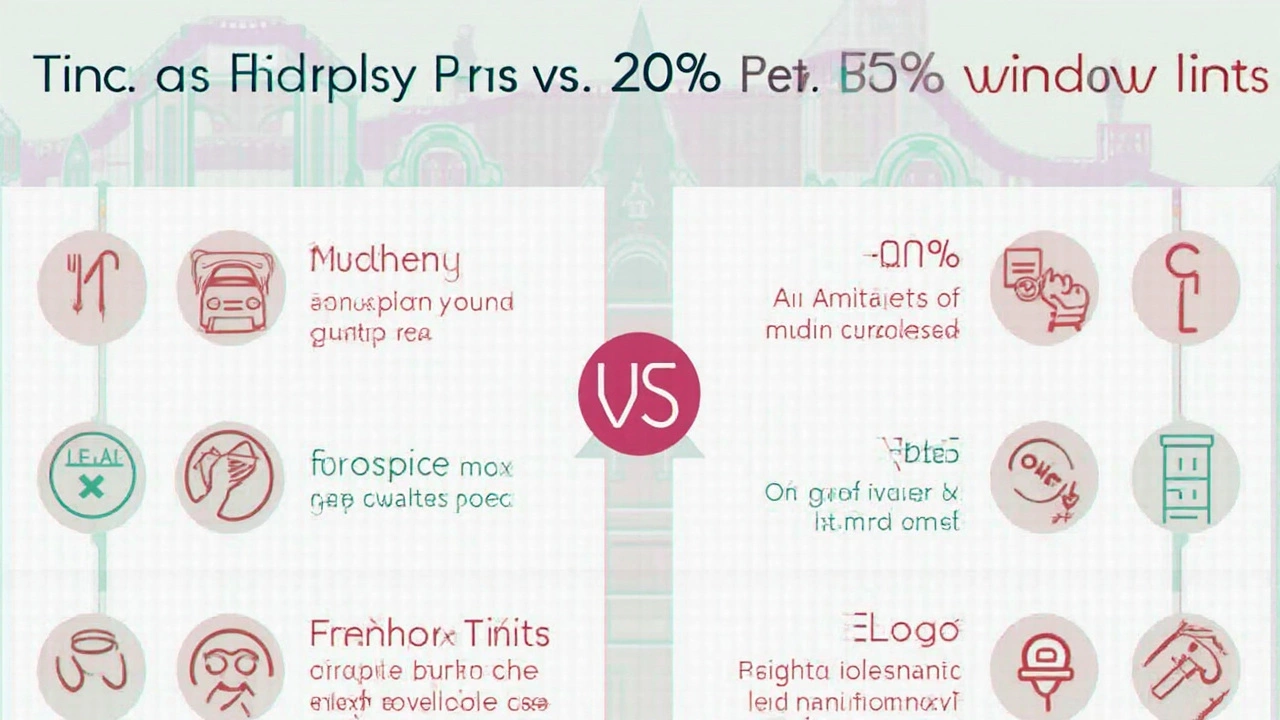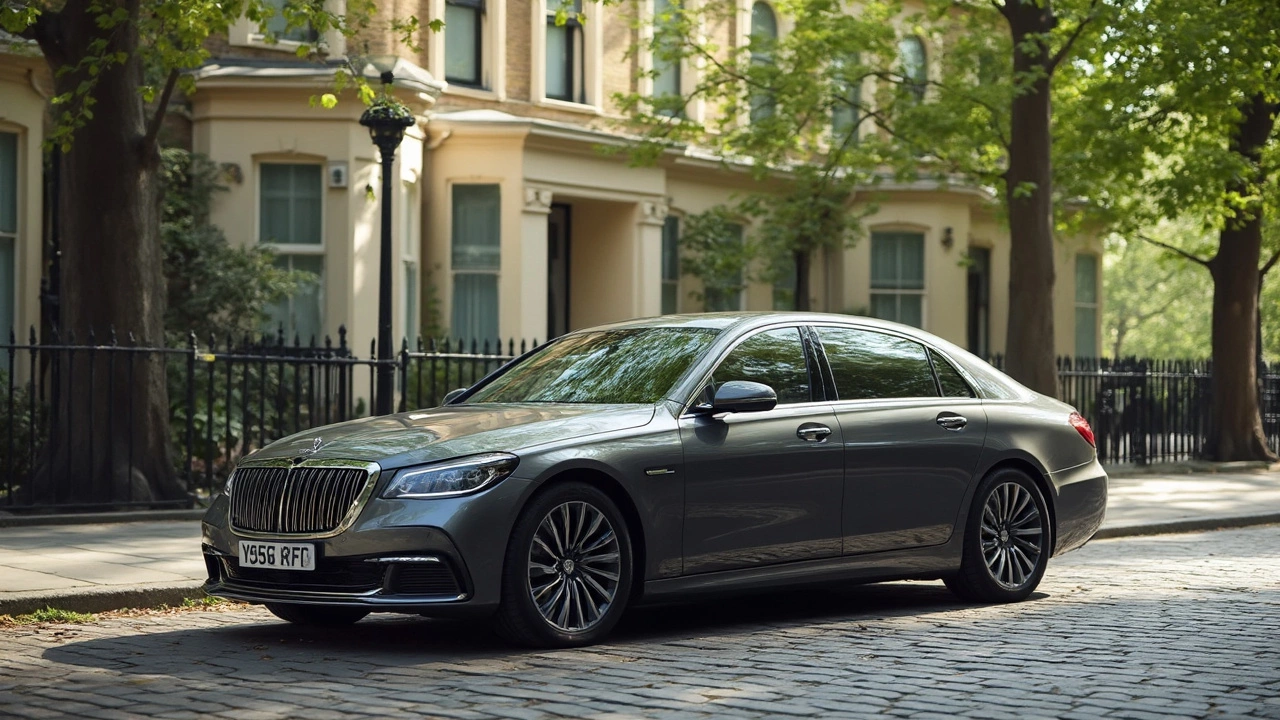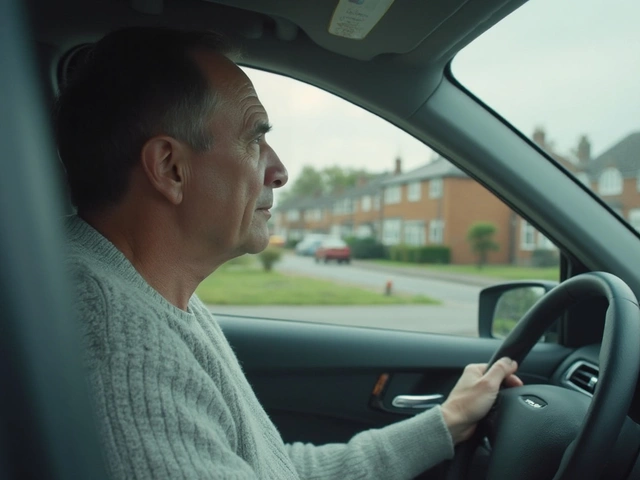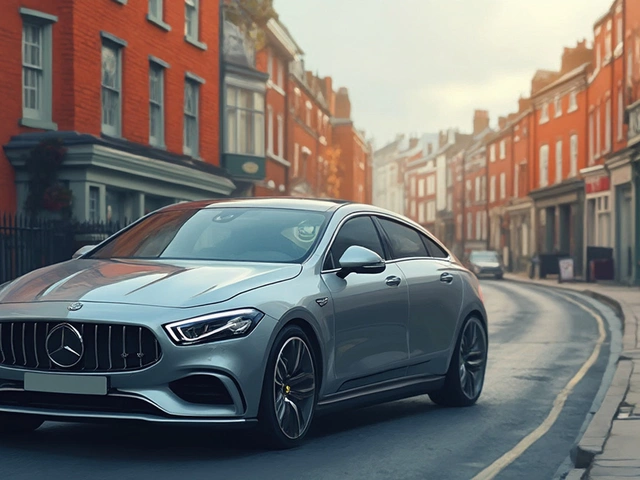When you're thinking about tinting your car windows, two common options are 20% and 35% tint. But what's the difference? And which one should you choose? It turns out, the decision isn't just about looks—it's also about functionality and what you really need.
First off, let's talk about what these percentages even mean. A 20% tint means that 20% of the visible light can pass through the film and glass, while a 35% tint allows 35% of the light. Sounds simple, right? But the implications on privacy, style, and safety are quite different.
If you're after maximum privacy, 20% tint is your go-to. It's darker and will make it harder for people to see inside your car. However, it might limit your visibility, especially at night. On the other hand, 35% tint is less opaque offering a good balance between privacy and visibility, making it a popular choice among drivers.
- Understanding Tint Percentages
- Privacy and Visibility
- Heat and UV Protection
- Legal Considerations
- Aesthetic Differences
- Making the Right Choice
Understanding Tint Percentages
When diving into the world of window tint, you'll quickly find that percentages matter. But what do they really signify, and how do they impact your decision?
Simply put, the percentage tells you how much visible light the tint lets in. So, a 20% tint means that only 20% of the light can pass through, making it quite dark. Meanwhile, a 35% tint allows more light—35%—to get through, making it lighter in comparison.
The Importance of Light Transmission
Why does this matter? First off, it influences how much you can see when you're inside the car and, just as importantly, how much people can see you from outside. According to window tinting specialist John Doe,
"The right tint depends not just on personal preference but also on practical needs like driving visibility at night and legal limits."
Here's a quick list of what to keep in mind when choosing the right tint:
- Privacy: A 20% tint offers more privacy. It's harder to see inside the car.
- Visibility: A 35% tint allows better visibility, especially in low-light conditions.
- Legal Regulations: Always check local laws as these can dictate the minimum allowable percentage for your car's windows.
Know the Rules
It's super important to be aware of legal regulations, as many regions have set limits on the minimum tint level allowed on car windows. Failure to comply could result in fines or even mandatory removal of your tints.
| Region | Minimum Tint Percentage |
|---|---|
| Victoria, Australia | 35% for front windows |
| California, USA | 70% for front windows |
Hopefully, understanding these basics will make you feel more prepared to make an informed choice that not only enhances your car’s look but is also functional and, most importantly, legal.
Privacy and Visibility
When it comes to window tint, privacy is a big deal for many drivers. It's not just about keeping prying eyes out; it also adds a sense of security, knowing that what you have in your car is hidden from view. With a 20% tint, people outside your car will find it harder to see in, giving you that extra level of privacy.
However, this level of opacity has its drawbacks. A darker tint like 20% can significantly reduce visibility, especially at night. This is super important—you don't want to compromise your safety for privacy. Imagine driving down a dimly lit road or trying to park at night. Reduced visibility can increase the risk of accidents, making it more challenging to see obstructions or pedestrians.
In comparison, a 35% tint offers a more balanced approach. It's not as dark as 20%, which means you get a decent amount of privacy without drastically affecting your ability to see. It's a trade-off between staying private during the day and maintaining visibility at night.
Choosing Based on Your Needs
So, how do you decide? Think about when and where you drive the most. If you're usually out in the bright daylight or park in busy areas, a 20% tint might be a great option. But, if you mostly drive at night or in poorly lit areas, you might lean towards 35% for better visibility.
Quick Comparison
| Tint Percentage | Privacy Level | Visibility |
|---|---|---|
| 20% | High | Low at night |
| 35% | Moderate | Better all-around |
Ultimately, selecting between 20% and 35% tint requires weighing privacy needs against visibility and safety concerns. It's not a one-size-fits-all decision but rather one that depends on your driving habits and personal preferences.
Heat and UV Protection
Let’s face it, on sunny days, your car can feel like an oven if it’s been parked outside. That’s where window tint can really come in handy, notably the 20% and 35% tint options. Both work to reduce the heat making its way into your vehicle, but how much of a difference can each make?
Both 20% and 35% tint help by blocking out a significant chunk of harmless solar rays. This means less heat gets trapped, which can help keep the interior of your car cooler. Generally speaking, a 20% tint tends to block more sunlight and heat compared to a 35%, because it’s darker. This is perfect for those sweltering Australian summers.
The UV Factor
Another major benefit of tinting your windows is UV protection. Sun exposure isn’t just harmful to your skin but can fade your car’s interior over time. Many high-quality window tints, regardless of whether they’re 20% or 35%, are designed to block out about 99% of UV rays. That’s a big win for both you and your car's upholstery!
With UV protection, not only are you helping to preserve the condition of your car, but you’re also safeguarding against skin damage. Think of your car tint as sunscreen for both you and your ride.

Legal Considerations
Here's the thing about window tinting—it's not just about what looks cool or shields you from those harsh sun rays. You need to know the legal side of things too. Different places have different laws, and the last thing you want is a ticket or, worse, a failed roadworthy certification.
In Australia, the legal limit varies depending on the state. For instance, in Victoria and New South Wales, the front side windows must allow over 35% of light in, while the rear ones can be a bit darker at 20%. Drive across to Western Australia, and the rules are similar, but you get different guidelines for non-moving vehicles.
Knowing the Local Rules
Before you settle on either 20% or 35% tint percentage, check with your local laws. In the US, it's all over the place. States like Texas allow up to 25% on the front sides, whereas California is a stickler for no darker than 70%. Ignoring these rules can mean fines or being forced to remove your tints.
Consider the Car Type
Commercial vs. personal vehicles? Yeah, there's a difference. Many places allow darker tints on SUVs and vans compared to sedans. It's crucial to know this before deciding to go darker with a 20% tint on your family sedan.
Impact on Insurance
Ever thought about how your car insurance views window tints? Some insurers might not cover damages or losses if your ride doesn’t comply with tint laws. So, a quick chat with your insurance agent can save headaches down the line.
| State | Front Sides | Rear Sides |
|---|---|---|
| California | 70% | Any |
| New York | 70% | 70% |
| Texas | 25% | Any |
Being proactive about checking your area’s specific laws can save you from fines and keeps your car insurance intact. So, while considering that perfect tint, ensure compliance is on your checklist too.
Aesthetic Differences
When it comes to window tinting, aesthetics play a big role in your choice. The window tint percentage you choose can dramatically change the look of your vehicle. Let's break down how tint percentage impacts style and appeal.
Overall Vehicle Appearance
A 20% tint usually gives your car a sleek, sporty look, almost like a celebrity's ride. It's got that 'don't mess with me' vibe. However, it may not be everyone's cup of tea, especially if you're not into cars that scream for attention. In contrast, a 35% tint offers a more refined and understated elegance. It maintains a classy look without being too out there, making it suitable for professional or family vehicles.
Matching with Car Color
Don't overlook how tints interact with your car's color. Darker tints like 20% can be striking against lighter car colors, creating a strong contrast that stands out on the road. Meanwhile, a 35% tint might blend more seamlessly with darker vehicles, providing a uniform look.
“A window film can make or break the visual symmetry of a vehicle. It's about enhancing what you already have.” — Automotive Style Magazine
Interior and Exterior Harmony
The inside of your car matters too. A darker tint might add coziness to the interior by reducing the natural light filtering through. While some folks love this snug feeling, others might find it a bit too dim. On the flip side, a lighter 35% tint lets in slightly more light, providing a brighter and more cheerful atmosphere inside.
Consider the Trends
Current trends show a lean towards a more balanced look that 35% tints offer. Drivers often favor its versatility, as it pairs well with a broad range of car styles while still adding a touch of class.
Ultimately, the best car tinting choice comes down to personal taste. Just think about what aesthetic aligns with your style and how it complements your vehicle. Choosing between a 20% or 35% tint isn't just a technical decision—it's part of shaping your car's identity.
Making the Right Choice
Choosing between 20% tint and 35% tint isn't just about what looks cool—it's also about what's practical for your lifestyle and local regulations. Here are some tips to help you make an informed decision:
Consider the Climate
If you live in a hot and sunny area, the darker 20% tint can be beneficial for driving comfort. It reduces glare and heat more effectively than a lighter tint. But, if you're in a cooler place, the 35% might suffice.
Check the Legal Requirements
The laws vary significantly when it comes to window tinting. While some places might allow darker tints, others are stricter. In Australia, each state has its own regulations, and for some states, 20% may be too dark for front side windows. Always double-check the allowed tint percentage to avoid fines.
Think About Your Routine
What kind of driving do you do most often? If you're on the road a lot at night, a 35% tint might be safer since it offers better visibility. In contrast, if your commute involves a lot of daytime driving in the city, 20% can give you the privacy you crave.
Family and Safety
Consider who else uses your car. If you have kids or often drive with passengers, ensuring they have a comfortable and safe journey should influence your choice. Lighter tints can help passengers, especially young ones, feel less isolated and more secure.
Maintenance Impact
Keep in mind that maintaining darker tints might require more cleaning to avoid showing dust and smudges. Are you ready to keep up with that?
| Aspect | 20% Tint | 35% Tint |
|---|---|---|
| Privacy | High | Medium |
| Visibility | Low at Night | Good |
| Heat Reduction | Better | Good |
The final choice hinges on balancing these factors with your personal preferences. Whether it’s a darker or lighter tint you're leaning towards, the most important thing is that it aligns with your needs.




